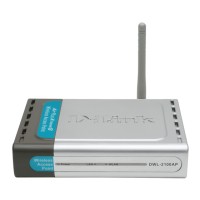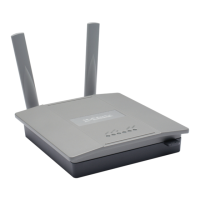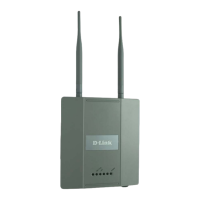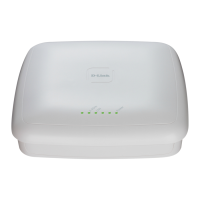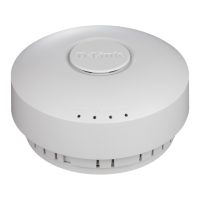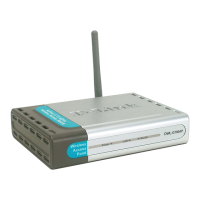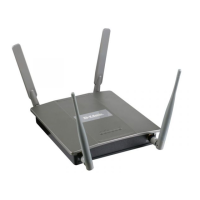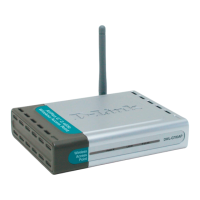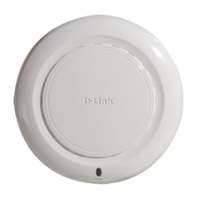Unied Access Point Administrator’s Guide
Page 49
January 2015
Section 4 - Managing the Access Point
Field Description
Radio Select the radio to congure. VAPs are congured independently on each radio.
VAP You can congure up to 16 VAPs for each radio. VAP0 is the physical radio interface, so to
disable VAP0, you must disable the radio.
Enabled You can enable or disable a congured network.
•) To enable the specied network, select the Enabled option beside the appropriate
VA P.
•) To disable the specied network, clear the Enabled option beside the appropriate VAP.
If you disable the specied network, you will lose the VLAN ID you entered.
VLAN ID When a wireless client connects to the AP by using this VAP, the AP tags all trafc from the
wireless client with the VLAN ID you enter in this eld unless you enter the untagged VLAN
ID or use a RADIUS server to assign a wireless client to a VLAN. The range for the VLAN ID
is 1 – 4094.
If you use RADIUS-based authentication for clients, you can optionally add the following
attributes to the appropriate le in the RADIUS or AAA server to congure a VLAN for the
client:
•) “Tunnel-Type”
•) “Tunnel-Medium-Type”
•) “Tunnel-Private-Group-ID”
The RADIUS-assigned VLAN ID overrides the VLAN ID you congure on the VAP page.
You congure the untagged and management VLAN IDs on the Ethernet Settings page. For
more information, see “Ethernet Settings” on page 35.
SSID Enter a name for the wireless network. The SSID is an alphanumeric string of up to 32
characters. You can use the same SSID for multiple VAPs, or you can choose a unique
SSID for each VAP.
Note: If you are connected as a wireless client to the same AP that you are administering,
resetting the SSID will cause you to lose connectivity to the AP. You will need to reconnect to
the new SSID after you save this new setting.
Broadcast SSID Specify whether to allow the AP to broadcast the Service Set Identier (SSID) in its beacon
frames. The Broadcast SSID parameter is enabled by default. When the VAP does not
broadcast its SSID, the network name is not displayed in the list of available networks on
a client station. Instead, the client must have the exact network name congured in the
supplicant before it is able to connect.
•) To enable the SSID broadcast, select the Broadcast SSID check box.
•) To prohibit the SSID broadcast, clear the Broadcast SSID check box.
Note: Disabling the broadcast SSID is sufcient to prevent clients from accidentally
connecting to your network, but it will not prevent even the simplest of attempts by a hacker
to connect or monitor unencrypted trafc. Suppressing the SSID broadcast offers a very
minimal level of protection on an otherwise exposed network (such as a guest network)
where the priority is making it easy for clients to get a connection and where no sensitive
information is available.
Security Select one of the following Security modes for this VAP:
•) None
•) Static WEP
•) WPA Personal
•) IEEE 802.1X
•) WPA Enterprise
If you select a security mode other than None, additional elds appear. These elds are
explained below.
Note: The Security mode you set here is specically for this VAP.
MAC Authentication
Type
You can congure a global list of MAC addresses that are allowed or denied access to
the network. The drop-down menu for this feature allows you to select the type of MAC
Authentication to use:
•) Disabled: Do not use MAC Authentication.
•) Local: Use the MAC Authentication list that you congure on the MAC Authentication
page.
•) RADIUS: Use the MAC Authentication list on the external RADIUS server.
For more information about MAC Authentication, see “Controlling Access by MAC
Authentication” on page 58.
Table 22 - Virtual Access Point Settings
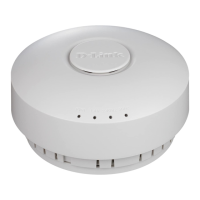
